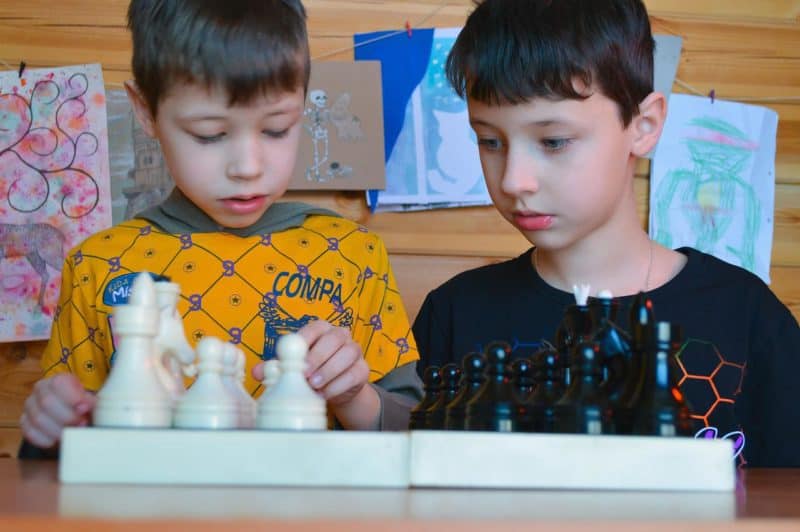In recent years, technology has had an increased presence in educational fields. Handheld devices are a common feature and virtual reality (VR) has become an accessible tool for an interactive curriculum. As a game developer, this is a great time for you to create titles that can both capture a growing portion of the market and have a positive impact on the development of young minds.

When done correctly, a game can demonstrate core learning concepts. There is also evidence to suggest video games have a positive impact on brain function and structure. However, to succeed here, it’s important to understand what makes a great educational game. While studying other educational games can give some clues, there are other areas you should consider when you’re going through the development process.
Let’s take a look at a few of the main elements that can help you on the path to making truly impactful educational games for children.
Know the Demographic
Not all educational games are going to resonate with all learners. You need to know what students you’re hoping to capture. These students are essentially your consumers. If you work with the mindset that they are, this can help you visualize what is essentially their customer experience with your educational games. Thus, you can optimize this CX with an increased knowledge base built around enhanced data collected on your audience. Clarity here can help you to more effectively direct both the educational content of your game and design the fun elements to have the greatest possible impact.
Some aspects to consider include:
Educational Stage
There is a tendency for developers to perform demographic research based on age. However, children develop through their education at different rates. Therefore, it tends to be more appropriate to consider their school grade. Research on this area can help you to better understand what the level of comprehension is likely to be and direct your efforts toward the concepts they’re covering in class.
Challenges

You must gain a deeper understanding of what challenges your target demographic is likely to be facing. This has various practical applications. Firstly, it helps you to know what hurdles your demographic faces so you can design your game to be accessible to all students. It also gives you a guide to difficulty levels — what challenges are appropriate for this group for educational value while avoiding abandonment? Knowing the relevant social challenges of your demographic is important, too, as you can use this to better inform any accompanying storylines and ethics-based content.
Curriculum Approach
Teaching style can impact how well your game integrates with the curriculum. Even with preschoolers, you should understand how play-based and academic-centred learning can involve very different priorities and methods. The former can seem more apt for educational games, as academics are explored through play. However, the greater focus here on social development can be problematic if your game is geared more toward the achievement of empirical goals. As such, it’s important to consider what learning styles the students are likely to experience so you can pitch the game’s tone and focus accordingly.
Balance Education and Entertainment
An educational game doesn’t really work if it is just a conduit for digital learning activities. The novelty of schoolwork being hosted on a device will soon wear off and there will be little else to hold children’s attention. Similarly, it doesn’t serve any academic purpose if it is purely a form of play, with only lip service to education. To develop a game that has an impact you need to achieve an edutainment balance.
Part of the challenge here is understanding how you can gamify educational concepts. Often this comes down to creating a sense of competition within the game that encourages students to level up and access the next lesson. One of the things educational game developers need to learn is that competitive elements — whether against human opponents or in-game foes — are not socially unhealthy. Rather, it is a route to engagement. You have to empower children to be passionate about gaining the academic concepts you are offering and use the prior knowledge they’ve earned to move up the ladder.
Consider the Environment
It might not be immediately obvious, but thinking about the circumstances in which a game is being played makes a huge difference. AAA studio titles, particularly horror games, capitalize on the tendency for gamers to be alone. They, therefore, crank up the audio and visual tension to play into this. The same should apply to your educational title. By remaining cognizant of where and how your game will be used, you can better direct its development.
If the game is intended to be played in a classroom environment, you may find it less helpful to make the gameplay and learning independently focused. Consider that there is a room filled with kids who can thrive through collaborative or competitive activities. Think also about how the technology currently presented in the classroom can be used in gameplay. The internet of things (IoT) is increasingly present in most schools today. Connected devices in this ecosystem are benefitting communication with digital blackboards, classroom organization through apps, and flexibility with cloud sharing. Consider the ways your game could be compatible with these elements, perhaps using interactive displays to create a shared experience, or augmented reality to incorporate their physical and virtual environments.
One of the key environmental considerations currently is the fact that some children may be in the classroom while others are learning from home. Part of your considerations to accessibility includes making certain your game can be used across a variety of platforms. This is particularly important if there are collaborative elements. If you risk excluding children because they’re not in the same environment as their peers, you aren’t making a product appropriate for the reality of today’s educational structures.
Conclusion
Making educational games is a challenging process. To create an impactful title, it’s important to gain a deeper understanding of your demographic’s needs. Take the time to understand how your game can fit into their educational environment and aim to strike a balance between educational value and fun. With a changing educational landscape, this is not always easy. But you have the opportunity to make a product that has a powerful effect on children today.


